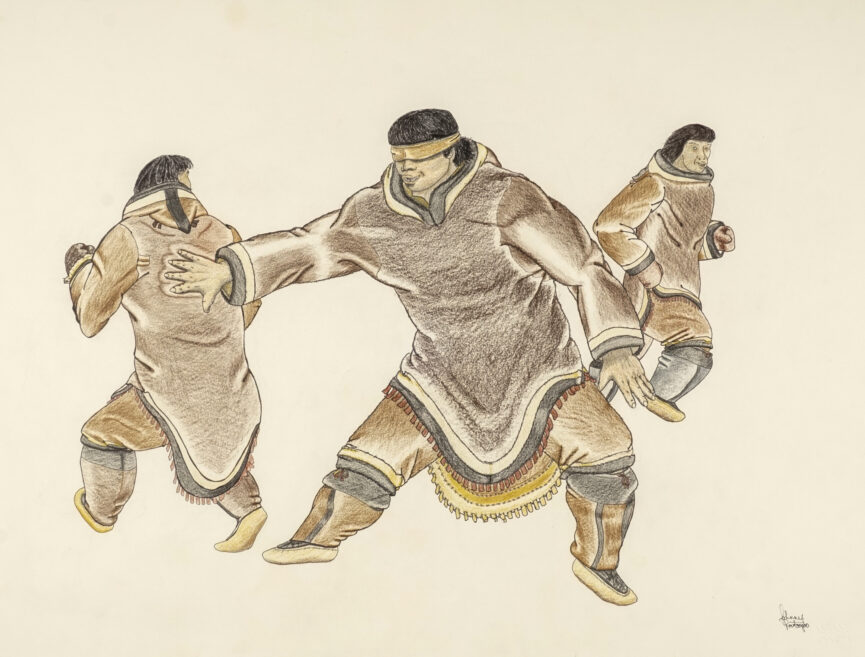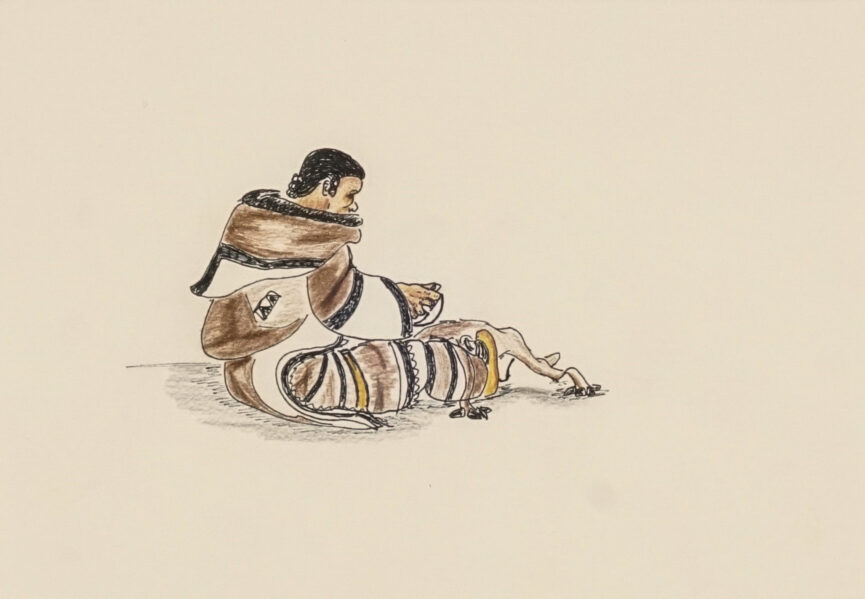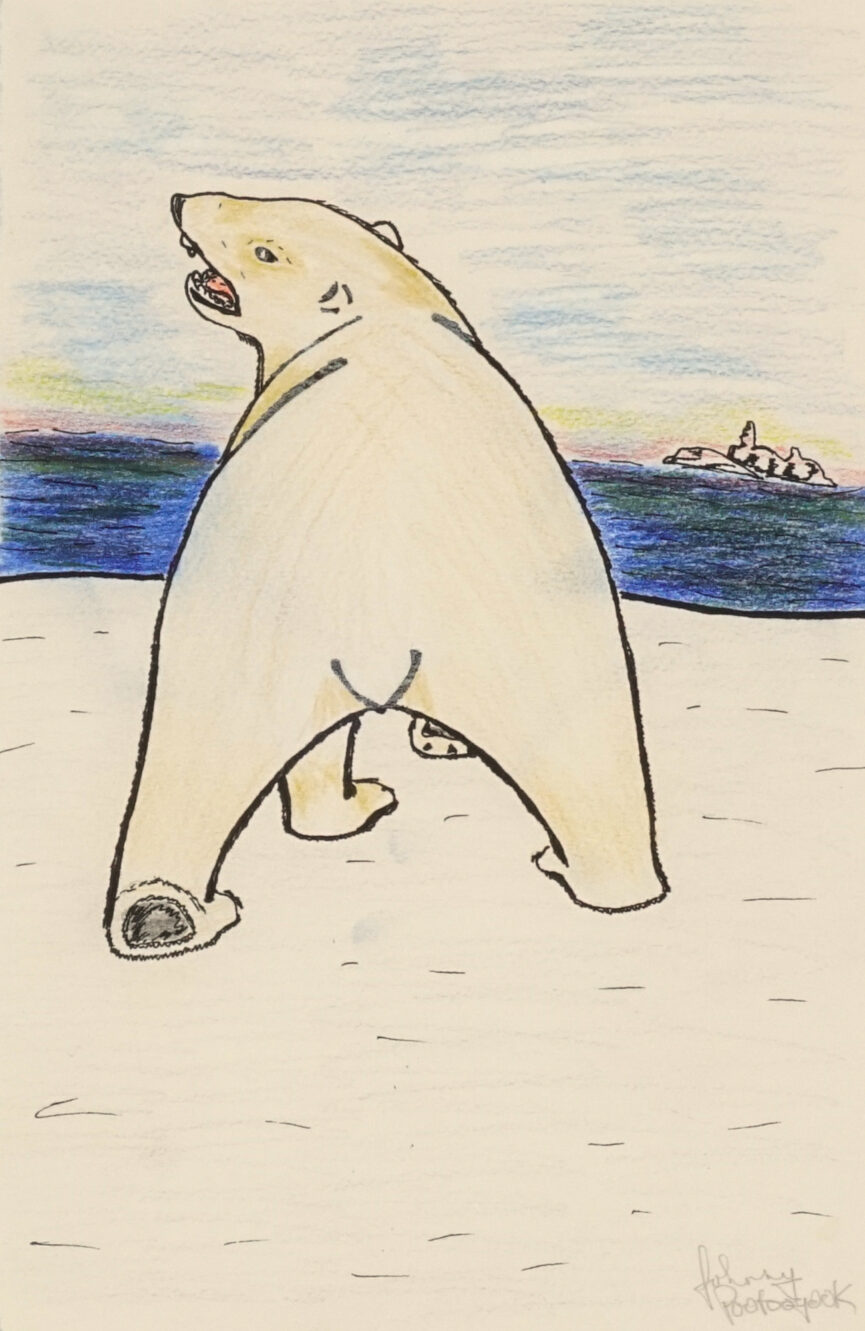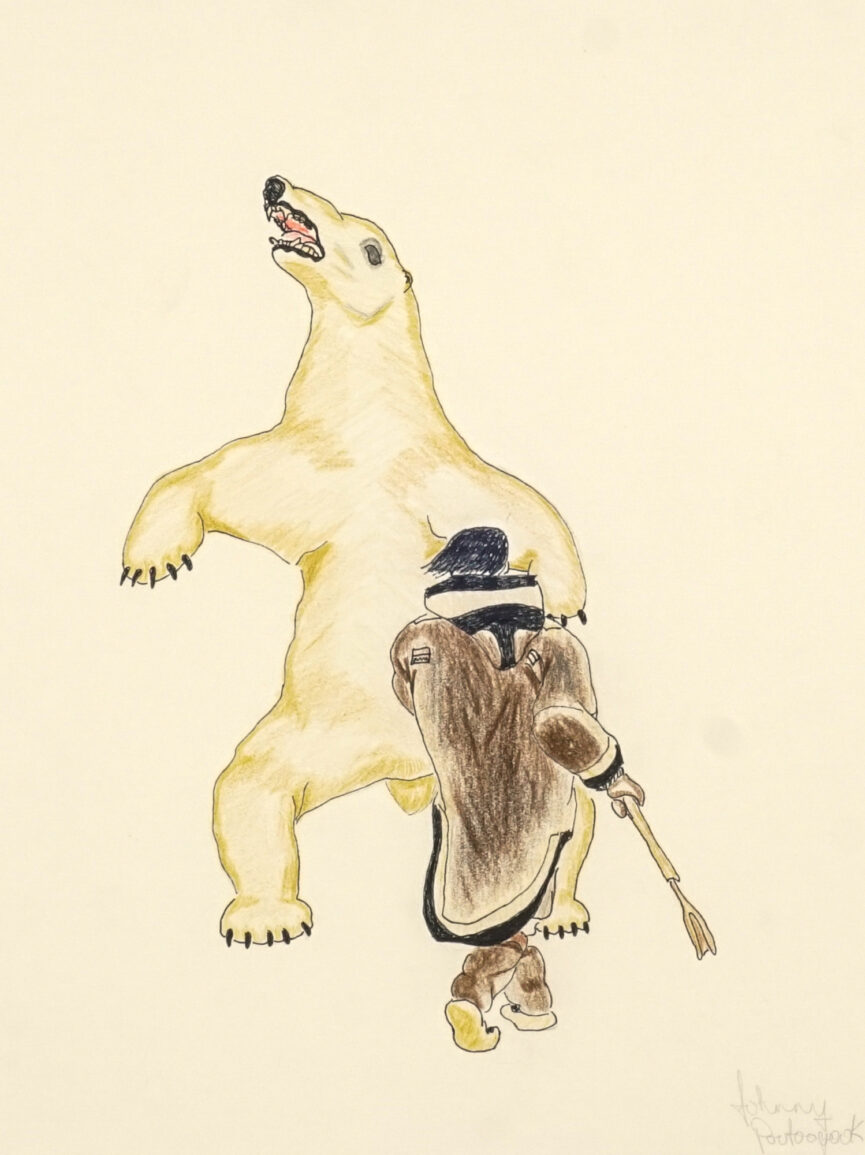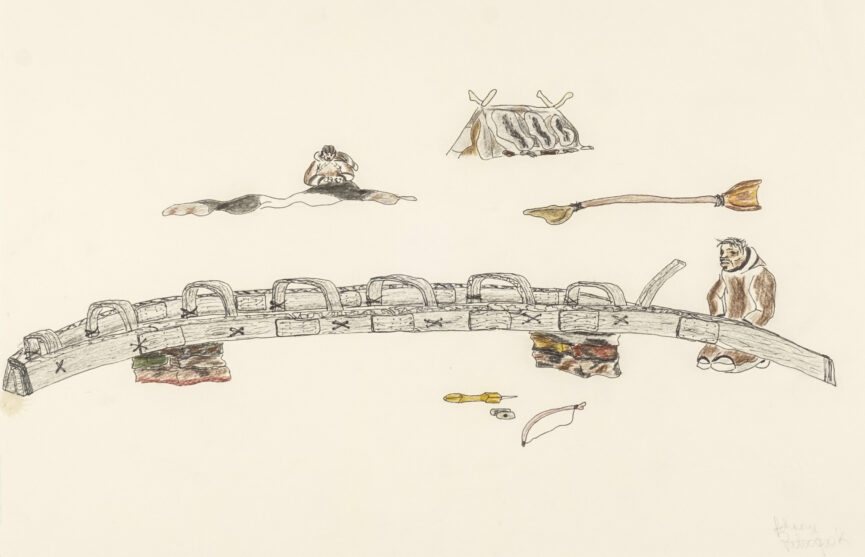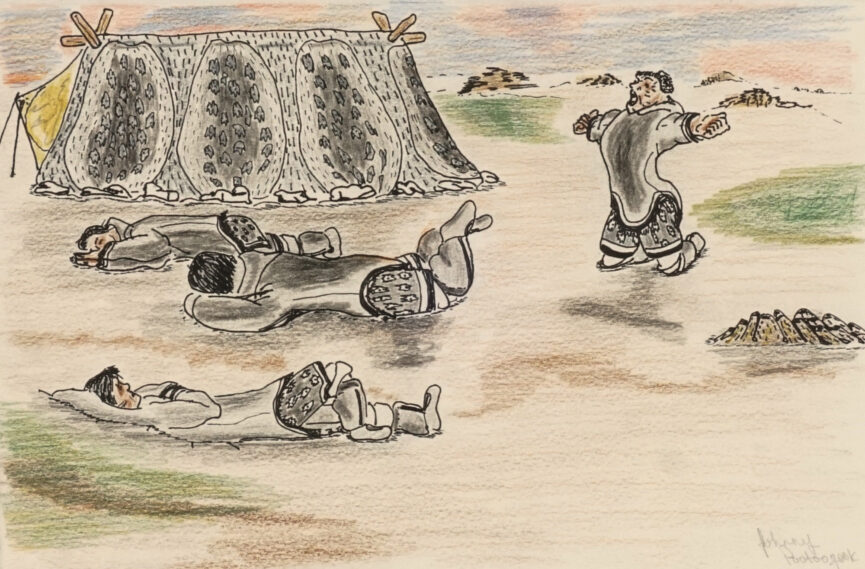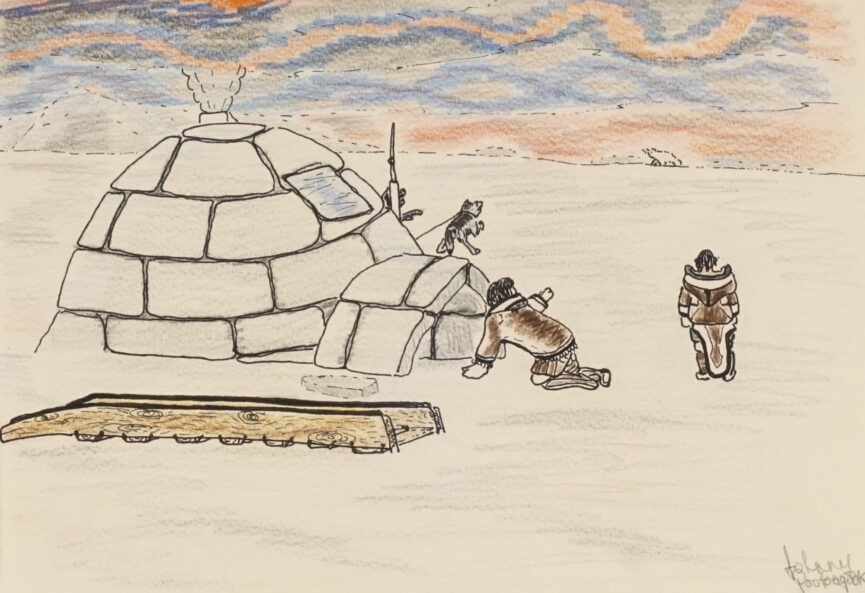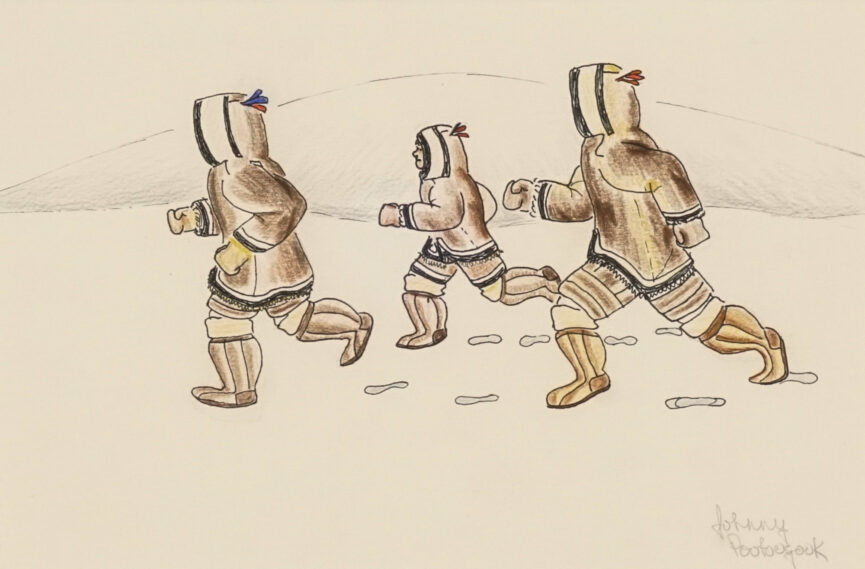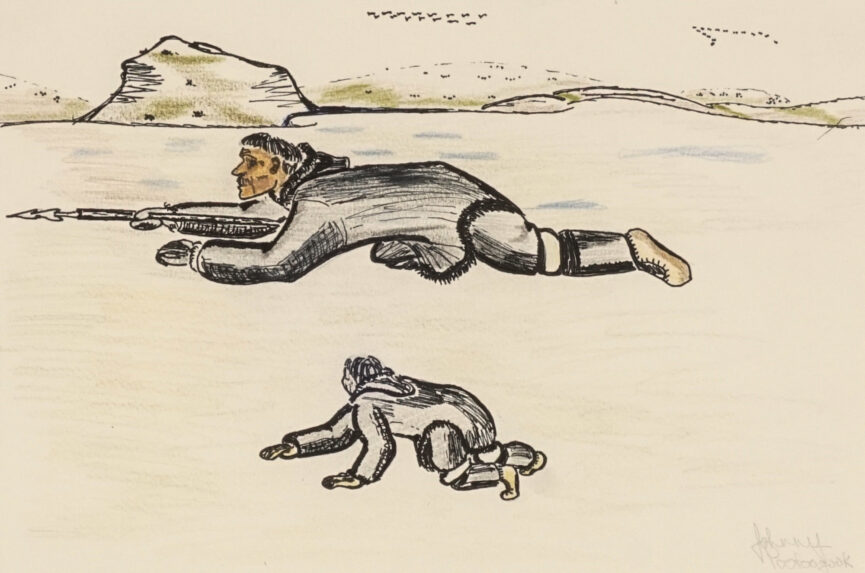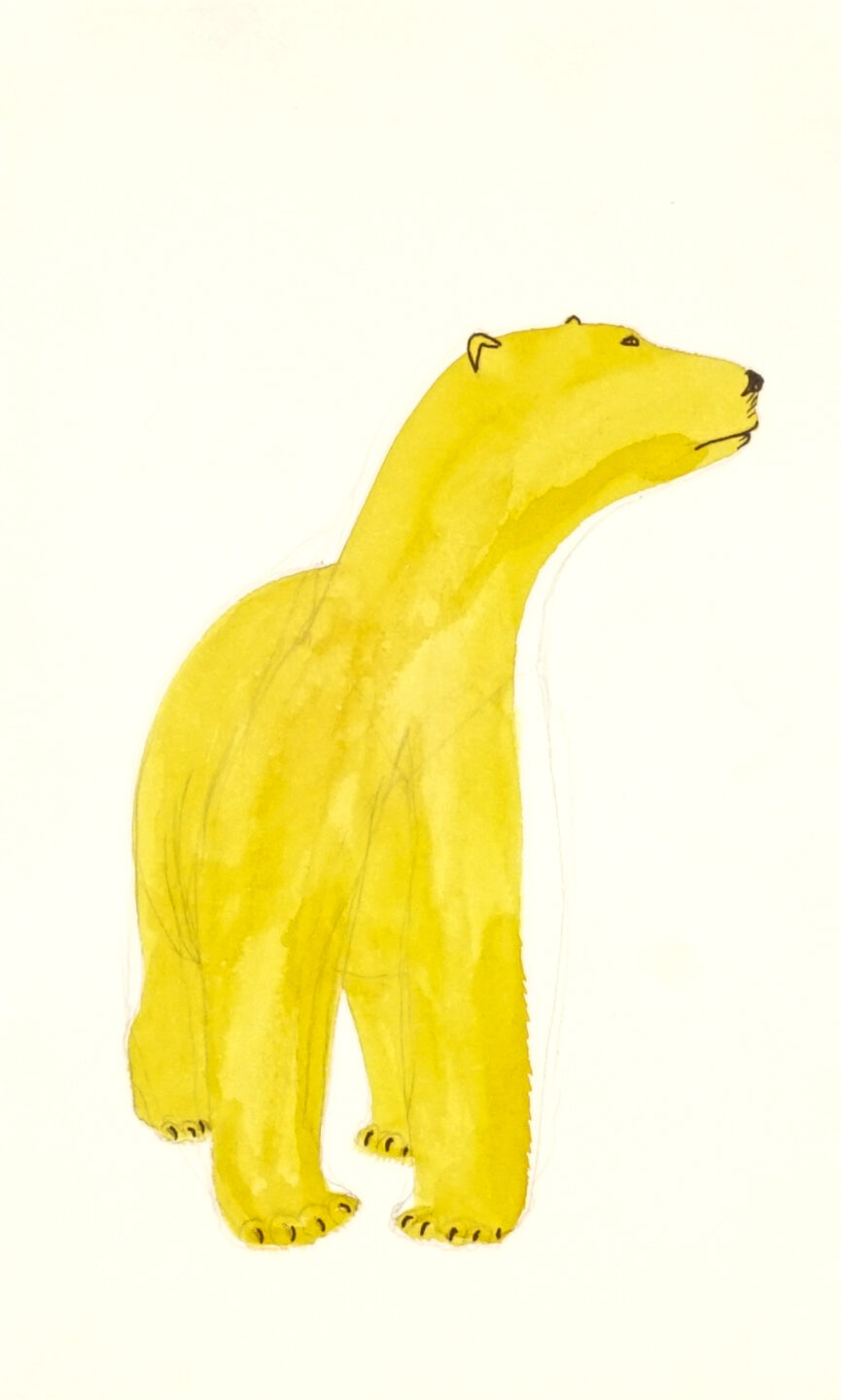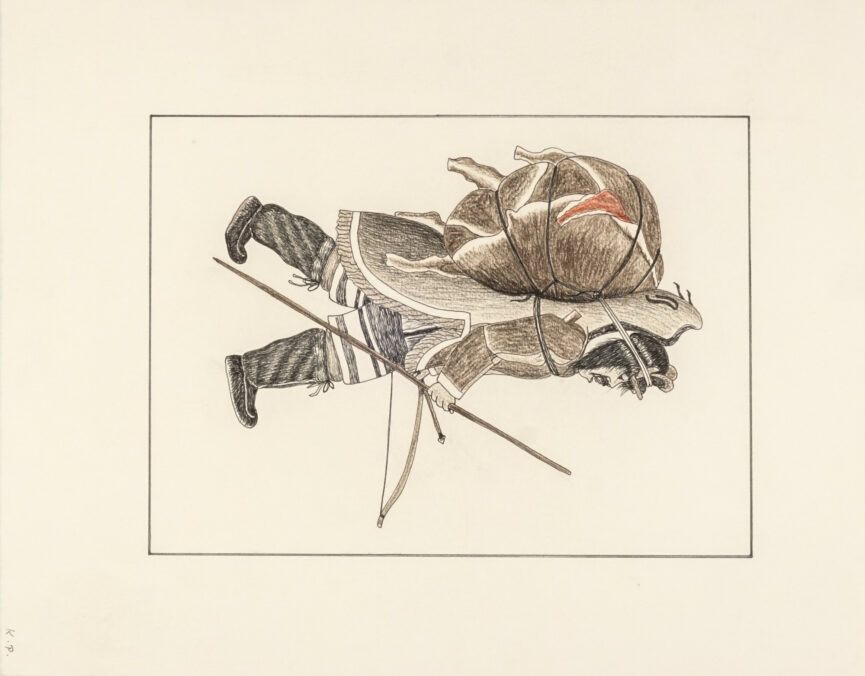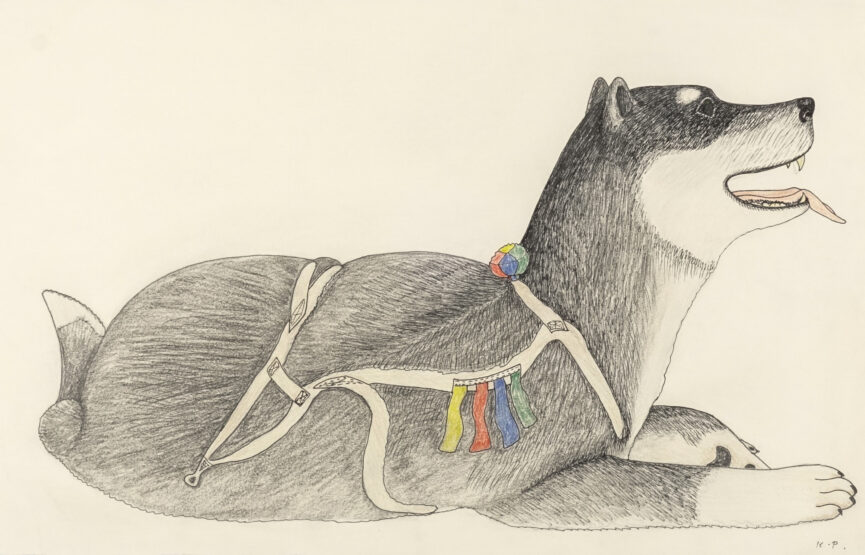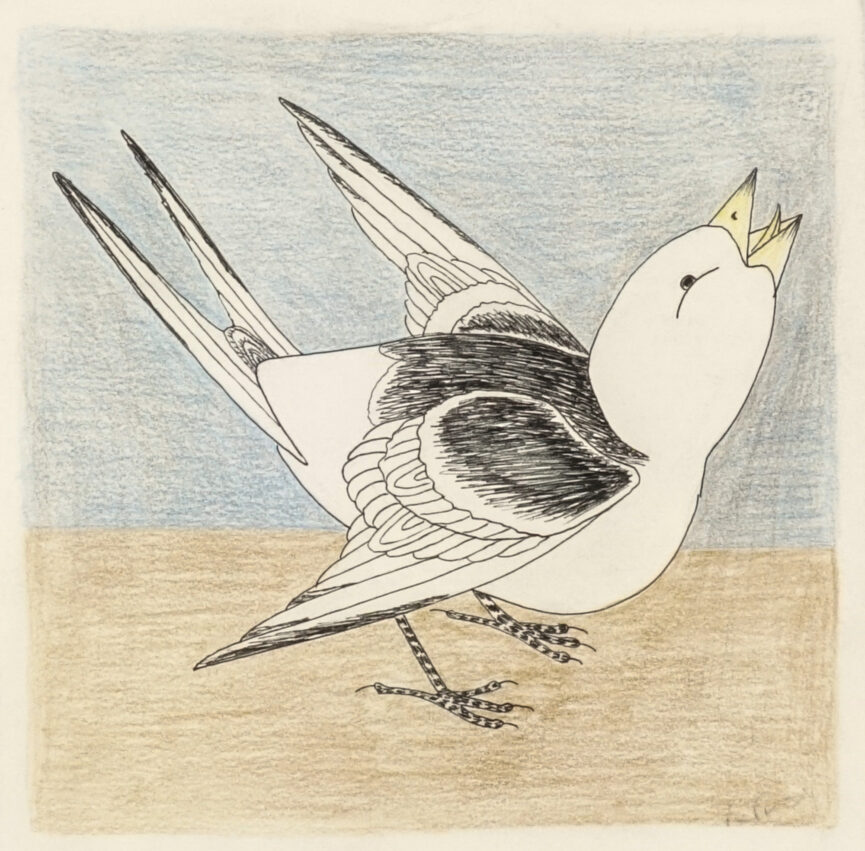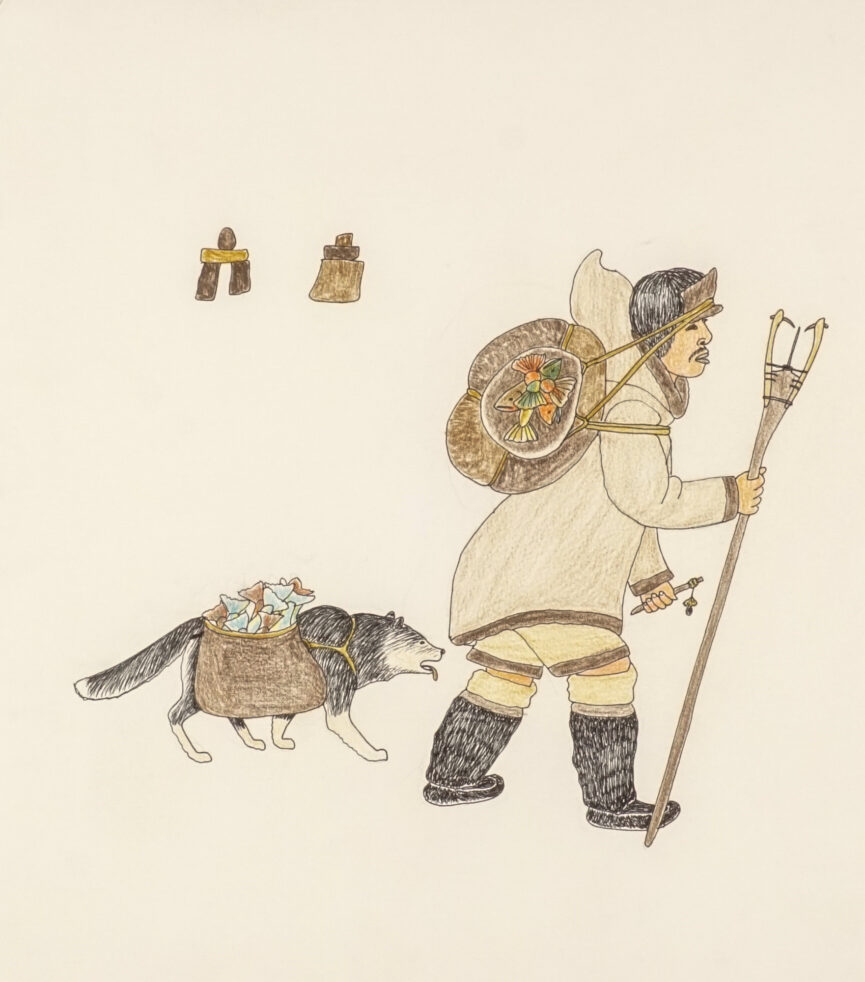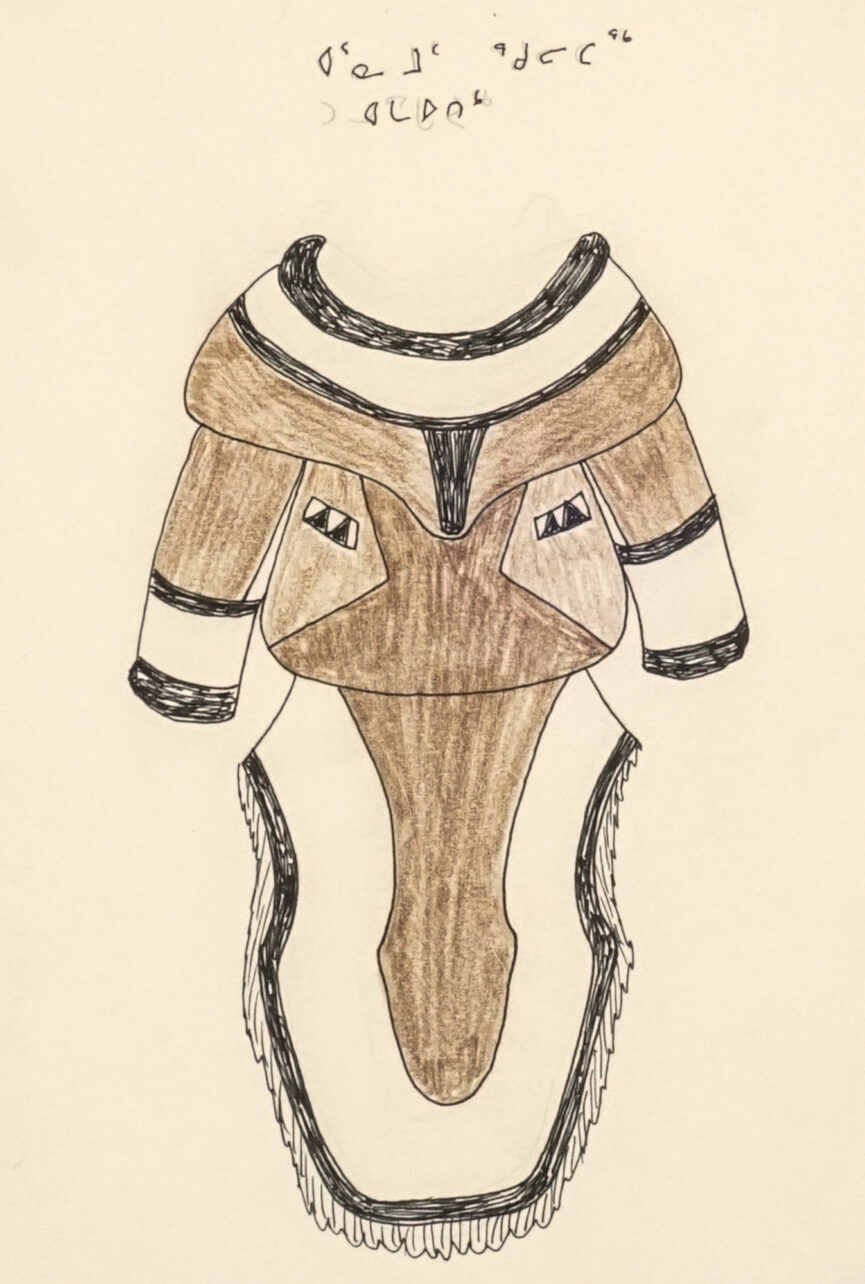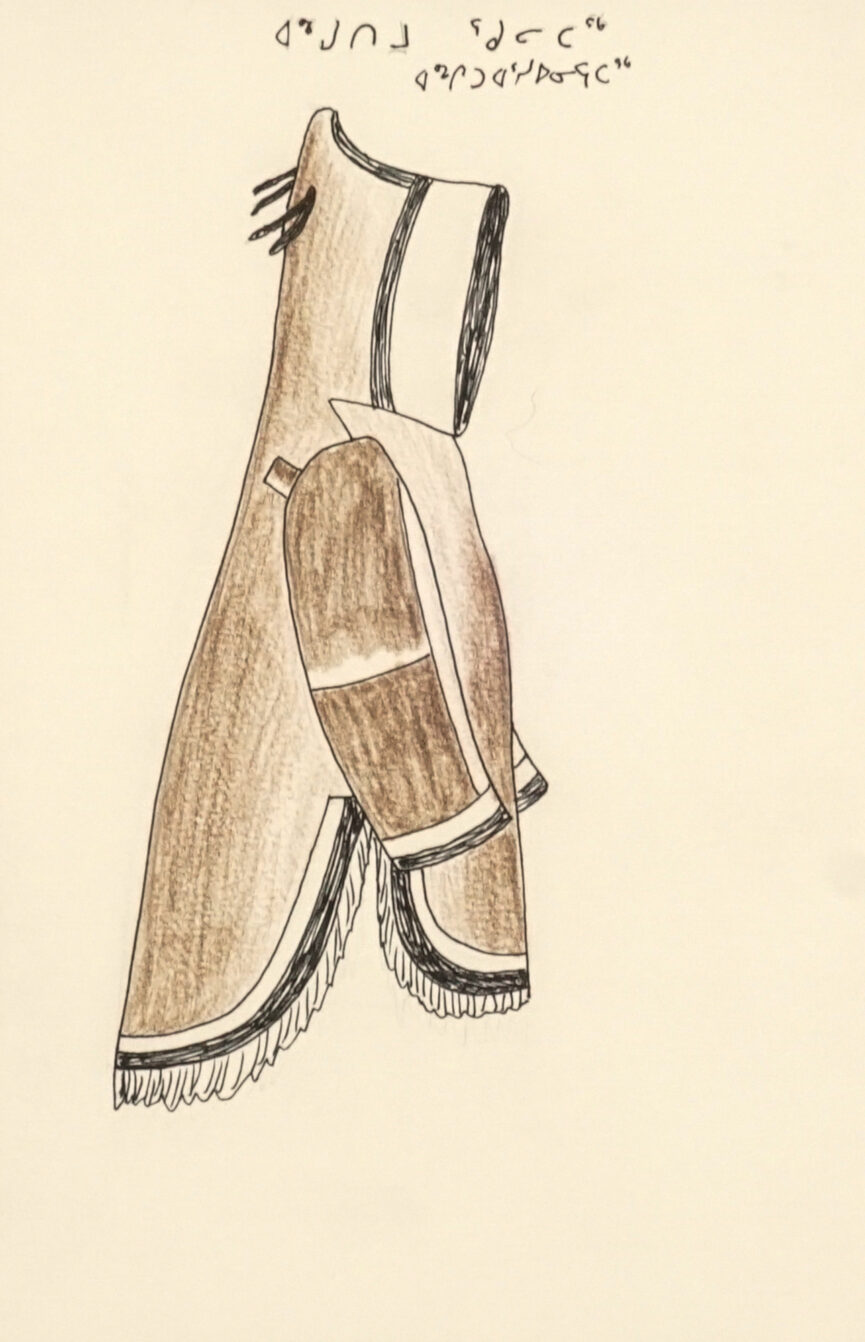The Old Ways
A Conversation Between Father and Son
November 22, 2025 – January 17, 2026
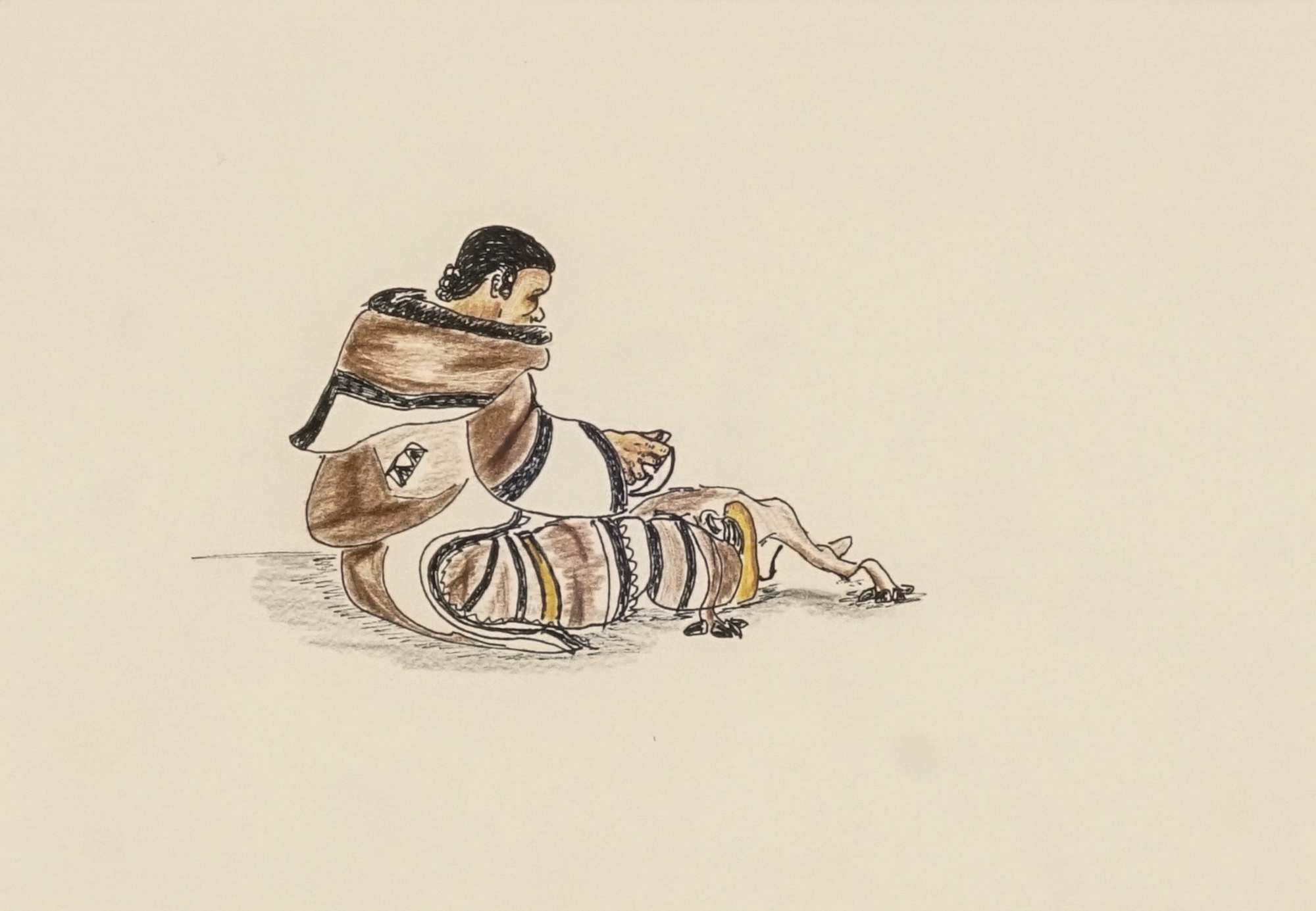
Johnny Pootoogook, CUTTING A CARIBOU, c. 1998, Kinngait, Coloured pencil & ink, 7 1/2 x 10 3/8 in.
Kananginak Pootoogook (1935-2010) was in the vanguard of artists who introduced the medium of printmaking to Kinngait. In addition to taking part in the early experimentation, he became a master printer and garnered an international following for his sculptures and graphic works. His youngest son, Johnny Pootogook would be the only one of his children to become an artist. Born in 1970, he began to sketch ideas in a drawing workshop taught by Kananginak, having already learned to sculpt under the teachings and watchful eye of his father. This remarkable collection of small-scale drawings is the result of the two artists drawing in conversation together at the beginning of Johnny’s career.
In an interview in June of 2025, Johnny recalled that this series of drawings were made between the mid 1990’s and the early 2000’s, just after the drawing workshop. They reflect Kananginak’s lifelong desire to document all aspects of Inuit traditional life for the benefit of future generations. Scenes of hunting, living, playing and even the intricate details of traditional clothing are all shown in these lively coloured pencil drawings. Eight drawings by Kananginak carefully document the details of traditional clothing. The front and back of a woman’s amauti, pants made from caribou and seal skins, and the difference in decoration of kamiks between men and women.
Another drawing is perplexing as it shows a hunter seemingly wrestling with a wolf. Johnny recalls being told that when attacked by a wolf, the hunter should press down on the wolf’s wisdom teeth with their thumbs to avoid being bitten. Without this personal reference by Johnny, the real meaning of this drawing would be lost.
In this collection, it is often hard to differentiate between the work of father and son. The style of realism presented is dynamic, and the challenging compositions attest to the talent of both artists. However, there is a marked difference in subject matter, with Johnny illustrating aspects of the darker sides of traditional life, such as Man Abducting a Girl to Be His Wife (c. 1998) or the act of murder in Death Caused by Jealousy (c. 1998).
This type of subject matter is seldom seen in drawings by the first generation of graphic artists. In Kananginak’s drawings, they tend to be purely informative – how to build a goose blind, a young boy with his first caribou harvest, or family members coming out of their igloo to gaze at a polar bear far off in the distance. Perhaps the most surprising and dynamic works are when each of the artists leaves aside illustrating the ‘old ways’ to simply draw what they wanted. Kananginak depicts one of his favourite birds in Snow Bunting (c. 1998), a heartfelt drawing of admiration for the species. In others, he imbues animals with a personality, such as a disgruntled polar bear or the eager expression on his harnessed lead husky dog, ready to begin the run.
Amid this series of drawings, Johnny experimented with three drawings of a walrus skull with a bullet hole simply stating he “wanted to try to make art with bones”. [1] This marks a bold approach from an artist of a younger generation, moving beyond the world and artistic approach of his father.
This collaboration between father and son marks the passing of skill, knowledge, and memories from the first generation of contemporary Inuit artists to the next, ensuring the continuity of contemporary art in the North.
Source:
- Interview with Johnny Pootoogook and Patricia Feheley, Kinngait, June 2025.

